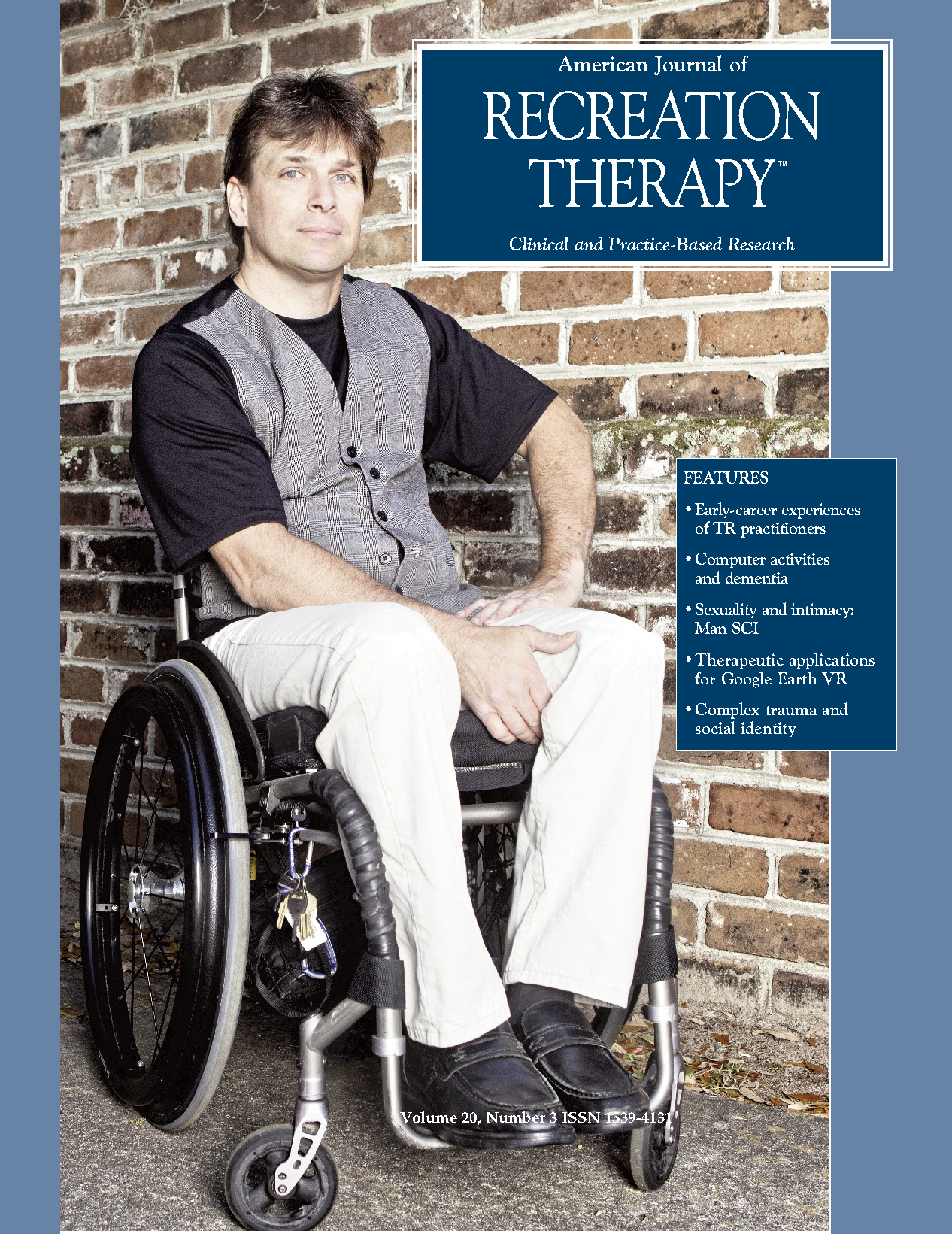Early-career experiences of TR practitioners in Australia, the United States, and Canada
DOI:
https://doi.org/10.5055/ajrt.2021.0236Keywords:
early career, therapeutic recreation, collaborationAbstract
The objective of this article is to draw attention to the negotiations and navigations of early-career practitioners within the discipline of therapeutic recreation (TR). Three of us, from Australia, Canada, and the United States, who are actively engaged in practice and scholarship, come together to discuss the challenges we each face to highlight the importance of local and global collaborations, and to critically account for the complexities of entering the TR field. Ultimately, this article aims to explore why a practitioner would commit to the profession of TR, and obtain and maintain a TR certification.
References
Ellis C, Adams TE, Bochner AP: Autoethnography: An overview. Hist Soc Res. 2011; 36(4): 273-290.
Land N, Gulamhusein S, Scott A, Coon E: Transdisciplinary conversations in child and youth care. World Futures. 2018; 74(7-8): 572-594.
Stumbo NJ, Peterson CA: The leisure ability model. Ther Recreation J. 1998; 32(2): 82-96. Available at https://js.sagamorepub.com/trj/article/view/1157. Accessed March 12, 2021.
Shusterman R: Thinking Through the Body: Essays in Somaesthetics. New York, NY: Cambridge University Press, 2012.
Spatz B: What a Body Can Do: Technique as Knowledge, Practice as Research. New York, NY: Routledge, 2015.
Bellefeuille G, Jamieson D: Relational-centred planning: A turn toward creative potential and possibilities. In Bellefeuille G, Ricks F (eds.): Standing on the Precipice: Inquiry into the Creative Potential of Child and Youth Care Practice. Alberta, Canada: MacEwan Press, 2008: 35-72.
White J: Knowing, doing and being in context: A praxis-oriented approach to child and youth care. Child Youth Care Forum. 2007; 36: 225-244.
Phelan J: Another look at activities. J Child and Youth Care, 2000; 14(2): 1-7. Available at http://www.cyc-net.org/cyc-online/cycol-0107-phelan.html. Accessed July 26, 2020.
de Finney S, Loiselle E, Dean M: Bottom of the food chain: The minoritization of girls in child and youth care. In Pence A, White J (eds.): Child and Youth Care: Critical Perspectives on Pedagogy, Practice, and Policy. Vancouver, BC: UBC Press, 2011: 70-94.
Ahmed S: Willful Subjects. Durham and London: Duke University Press, 2014.
Styhre A: Intersectionality and professional work in the life sciences: Constructing identities on the basis of affirmation, dis-identification, and professional distancing. Ephemera. 2018; 18(1): 51-79.
Published
How to Cite
Issue
Section
License
Copyright 2000-2025, Weston Medical Publishing, LLC and American Journal of Recreation Therapy. All Rights Reserved.


